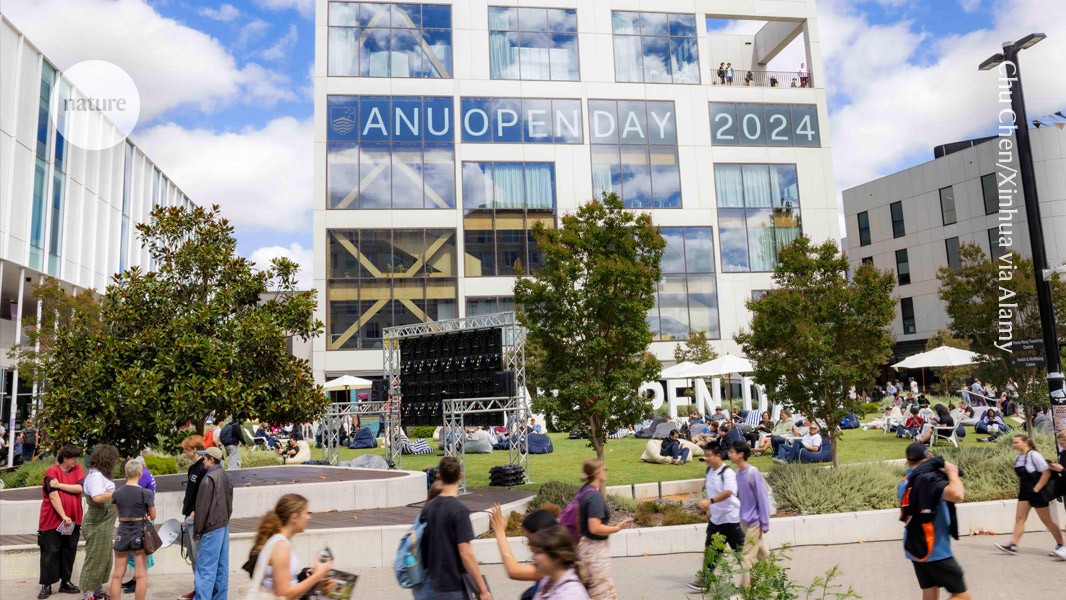Immigration rules restricting the number of foreign students in some countries are putting universities under pressure. From the United Kingdom and Canada to Australia, universities say that border restrictions have led to large declines in international-student enrolments, and that these are crunching their budgets, global reputations and ability to contribute to global science.
In a survey of 365 universities in 66 countries or regions released this month, 41% of institutions reported a drop in the number of postgraduate enrolments this year compared with last year, and 31% reported declines in undergraduate student numbers. Universities say that restrictive government policies and problems obtaining visas were major factors in the declines.
The largest average drops were in the United Kingdom and Canada, according to the survey, which was led by the education-choice platform, Studyportals in Eindhoven, Netherlands. In the United Kingdom, postgraduate enrolment dropped by 18% and undergraduate enrolment by 4%. Earlier this year, the UK government tightened its immigration rules, including increasing salary thresholds for skilled-worker visas, excluding family members from student visa applications for undergraduate students and raising the costs of visas.
In Canada, postgraduate enrolment declined by 27% and undergraduate enrolment by 30%. That follows the government’s introduction in January of a cap on the number of international students entering the country. And in September, it announced that the cap would shrink by a further 10% next year, to 437,000 permits, and would be broadened to include master’s and doctoral students. The Canadian government says that the cap helps to prioritize Canadian workers in a softening labour market and ensures that foreign students can be supported.
Gabriel Miller, president of Universities Canada in Ottawa, which represents close to 100 universities, says that the cap on international students has damaged the nation’s reputation. This has meant “an explosion in budget deficits that are not sustainable”, for universities, he says.
Down under
Australia is also imposing restrictions on international students. Over the past year, the government has, for instance, increased visa fees for students and tightened English-language requirements — measures that some say have reduced foreign student numbers.
The government had planned to introduce a cap on the number of foreign students at its universities from 2025, but the policy failed to gain enough support in parliament. It says that the policy was designed to return international student numbers to more sustainable levels, help to ensure safe and secure housing for all students and “address corruption and integrity issues in international education”, according to a spokesperson for Australia’s department of education.
Researchers say that reducing foreign student numbers will exacerbate existing problems with research funding. These include a decrease in government spending over the past decade, which has pushed success rates for competitive grants to their lowest on record. “The system for funding science is vulnerable and broken,” says Chennupati Jagadish, president of the Australian Academy of Science, in Canberra.
In 2022, 27 of Australia’s 42 universities reported budget deficits, and some have already announced job cuts. “Universities across Australia are all going to be, if they’re not already, in financial trouble,” says Emma Johnston, the outgoing deputy vice-chancellor of research at the University of Sydney.
One key problem is the low contribution of government funding to the indirect costs universities incur for running facilities and paying for journal subscriptions, for example. Universities make up that shortfall mainly through fees from international students.
Reducing student intake will diminish universities’ ability to fund quality research, says Peter Høj, vice-chancellor of the University of Adelaide. “That’s really the current conundrum.”
Belt-tightening
Universities are already planning for drops in international student fees. In practice, this will mean not replenishing positions when people leave, says Høj. Early-career researchers will probably be hit hardest, says Johnston.
Researchers working in riskier or more speculative areas will also be affected, because they tend to be financed by the universities themselves, says Margaret Sheil, vice-chancellor of the Queensland University of Technology in Brisbane.
“There is more funding available for research with industry,” says Bronwyn Fox, deputy vice-chancellor for research and enterprise at the University of New South Wales in Sydney, whose university has been especially successful in securing these funds. “We’ll have to find creative ways of doing more with less,” she says.


